Lifetime achievement award for Umberto Bombana, Hong Kong’s ‘king of white truffles’, from Asia’s 50 Best Restaurants
Honoured in regional dining awards, the chef-owner of Michelin-starred 8½ Otto e Mezzo Bombana says he’s just a servant of nature who respects the ingredients he works with
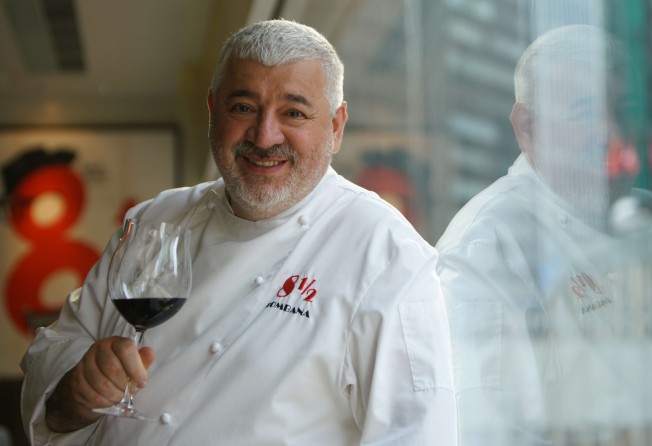
Umberto Bombana has seen many changes in the Hong Kong food scene since he moved to the city in 1993 – not least in his own career. In that time the chef’s 8½ Otto e Mezzo Bombana restaurant in Central has attained a three-star rating in the Hong Kong Michelin guide, and it came in at No 13 on the 2016 list of Asia’s 50 Best Restaurants. On Wednesday, Asia’s 50 Best Restaurants announced that Bombana will receive The Diners Club® Lifetime Achievement Award for 2017 at a ceremony this month in Bangkok.
WATCH Bombana in a recent Hong Kong Tourism Board video
Bombana first came to the attention of Hong Kong food lovers when he was chef at Toscana in the Ritz-Carlton, back when the hotel was in Central; he was there from the opening of the hotel in 1993, until it closed in 2008. A native of Clusone, in the Italian province of Bergamo, he went to hotel school when he was 14, then worked in Milan at the now-closed Antica Osteria del Ponte, which at the time had two Michelin stars. (It later attained a third star.)

“The first time I stepped in the kitchen, I knew this is where I wanted to be,” the chef says over coffee at Otto e Mezzo. “It’s something I related to. It was hard work, and when my friends went out to play, I had to work, but I knew I really liked it and I was fascinated by it.
A hotel has too many structures, too many layers. It’s like the difference between driving a bus or a really fast motorcycle: if you want to get anywhere, the restaurant is much faster
“I have many friends who went to hotel school with me, but I was lucky because the second or third job I took was with one of the biggest chefs in Italy. I was lucky to get the job at Antica Osteria del Ponte – my whole career took off from there because you understand what refined food is, how to take care of the ingredients. This was a form of art, a form of expression by the chef – it was about technique and philosophy. That’s what changed me. I started there when I was 17 and left when I was 20.”
I think Hong Kong has the best customers, plus, they have money
Bombana then went to work at the Rex il Ristorante in Los Angeles, now closed, and had stints at restaurants in Paris and New York. Ten years after he left Italy, the opportunity came to move to Asia, when a chef at the Ritz-Carlton in Laguna Niguel, California, recommended him for a position at the Ritz-Carlton Hong Kong, which was opening a high-end Italian restaurant. Bombana moved to Hong Kong, sight unseen.
“I wanted to see Asia,” he explains. “I said yes [to the offer] right away. I knew the Ritz-Carlton did a very good job in Laguna Niguel and I wanted to explore this one. I had never worked in a hotel before; I always worked in private restaurants. I wanted to see how the organisation works, I was curious. It was a good experience.”
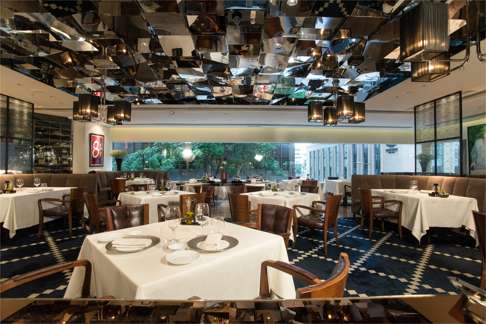
“A hotel is a big operation – it’s complex, like a small city. It’s a lot of fun to work in a hotel. You’re connected with all the other departments and I really enjoyed that, but in a restaurant you can have an immediate decision. If tomorrow I decide I want a marble table in the restaurant, I do it – I don’t need six signatures for approval.”

“[The restaurant scene] has evolved so much, I think it’s wonderful. There are a lot of great chefs, and it’s important that there are so many great restaurants outside hotels – that gives soul to the city. Before, if you wanted a fine meal you’d have to go to a five-star hotel, but now you can go to an independent restaurant.”
Bombana says it’s now much easier to get the ingredients he wants. “Before, it was tough to get ingredients. There wasn’t much demand, so it didn’t make sense for the importer to bring in a certain amount. Now, you can get whatever you want, and it’s not just Italian. You can get French, British, American and Japanese ingredients. The Japanese have amazing ingredients; we use some of them here.”
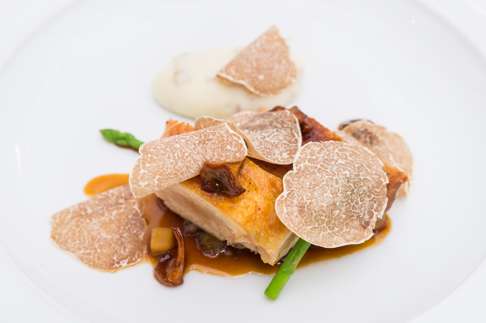
“For Hong Kong people it’s important to travel, and I think one of their major [objectives] when they go abroad is to try the best restaurants. It’s a very open city. I think Hong Kong has the best customers, plus, they have money.”
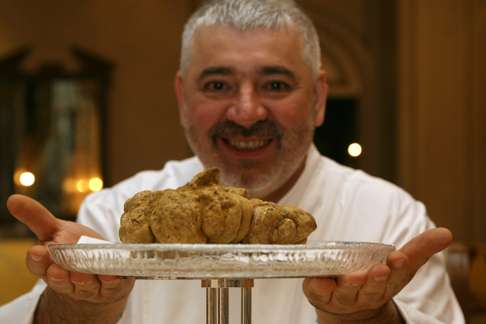
“White truffles are a fascinating ingredient. I like the seasonality of them, the glamour, and I like the intense flavour. So far, whenever I’ve served white truffles, nobody has ever told me they don’t like them. If they’ve never tried them before, they’re shocked at the impact [of the aroma and flavour].
“My favourite way of eating them is with eggs or pasta. It should be something simple – an ingredient that surrenders to the flavour of white truffles.”
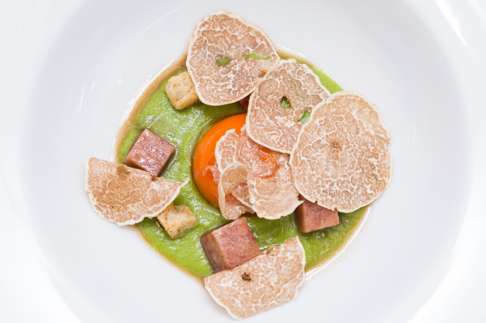
Pretty pictures aside, Bombana says that the most important thing about food is “the pleasure of the palate”.
“The food has to taste good. I went to Japan and tried a three-star sushi place – Kanda. You had a piece of fish – just a piece of raw fish – on top of some rice that was a certain degree. But the taste was so wonderful. When the tuna is caught while eating squid – not sardines, because the taste would be too strong – and the cut of fish is otoro, and when you add a touch of soya, and then eat this when the rice is warm and the fish is cold – that’s when you have the best experience. I think I’m searching for that – the best bite – in everything I do.
“I get my inspiration from what God gives us – the beautiful things from the garden, the animal that has to die for our pleasure. You have to respect what you make, respect the ingredients. It has to taste right. I think we are the servants of nature.”